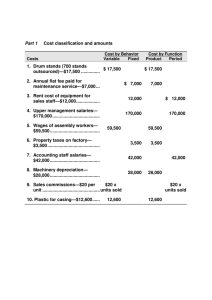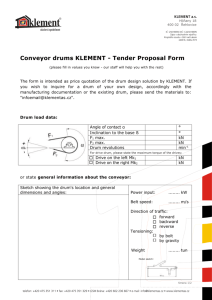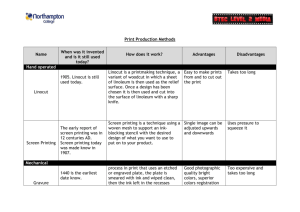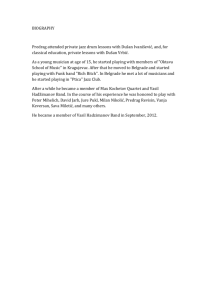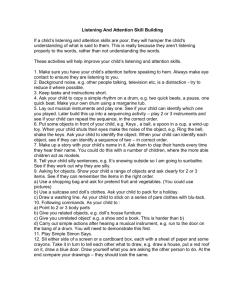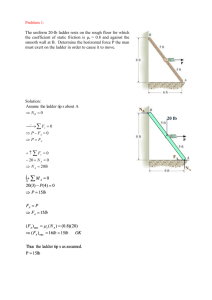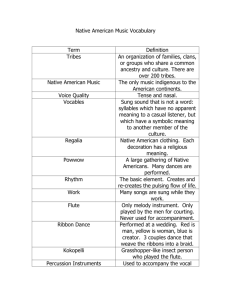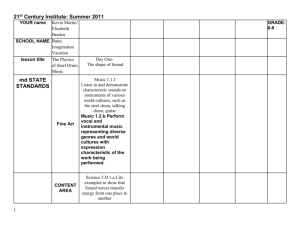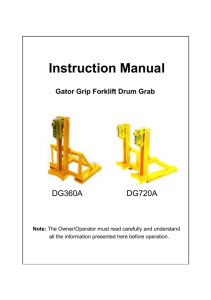Activity sheet
advertisement
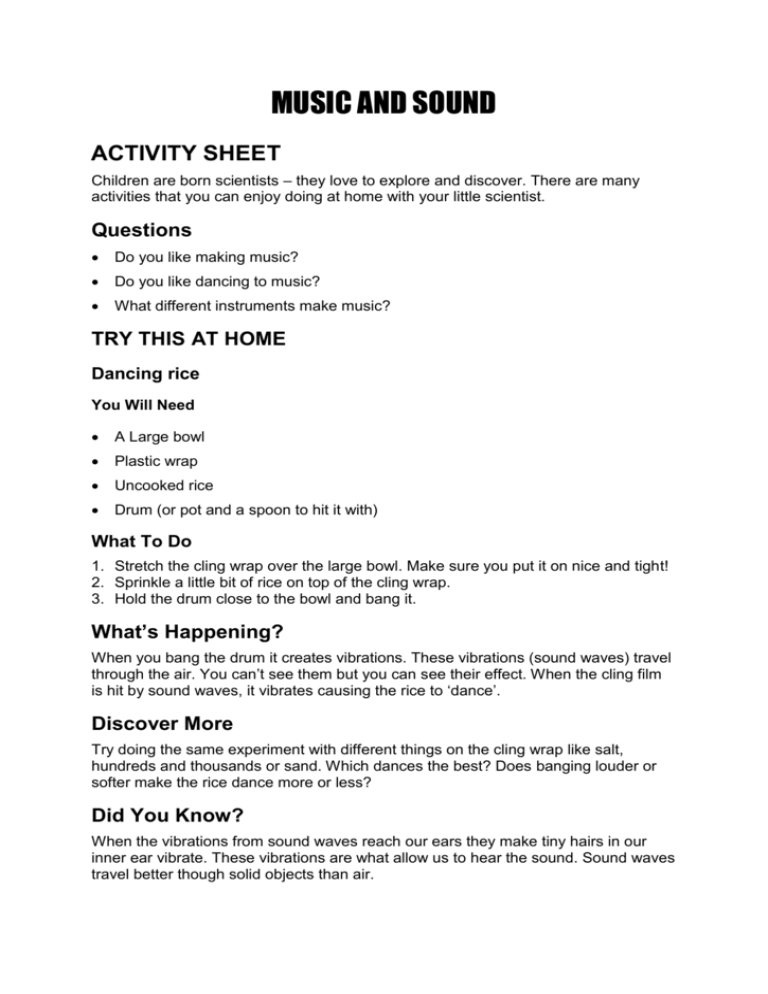
MUSIC AND SOUND ACTIVITY SHEET Children are born scientists – they love to explore and discover. There are many activities that you can enjoy doing at home with your little scientist. Questions Do you like making music? Do you like dancing to music? What different instruments make music? TRY THIS AT HOME Dancing rice You Will Need A Large bowl Plastic wrap Uncooked rice Drum (or pot and a spoon to hit it with) What To Do 1. Stretch the cling wrap over the large bowl. Make sure you put it on nice and tight! 2. Sprinkle a little bit of rice on top of the cling wrap. 3. Hold the drum close to the bowl and bang it. What’s Happening? When you bang the drum it creates vibrations. These vibrations (sound waves) travel through the air. You can’t see them but you can see their effect. When the cling film is hit by sound waves, it vibrates causing the rice to ‘dance’. Discover More Try doing the same experiment with different things on the cling wrap like salt, hundreds and thousands or sand. Which dances the best? Does banging louder or softer make the rice dance more or less? Did You Know? When the vibrations from sound waves reach our ears they make tiny hairs in our inner ear vibrate. These vibrations are what allow us to hear the sound. Sound waves travel better though solid objects than air. TRY THESE OTHER ACTIVITIES Coat hanger walkman: Tie string to the corners of a coat hanger. Tie a loop in the other end of the string, loop it onto your fingers and put your fingers in your ears. Tap the coat hanger with a spoon and it will sound like a bell. Rubber band guitar: Find a plastic container with a lid, such as an ice-cream container. Cut a 5 cm hole in the bottom of the container. Stretch different sized rubber bands around the container so they cross over the lid. Play your rubber band guitar by plucking the rubber bands. Musical glasses: Fill a few glasses or jars with different amounts of water. Tap the sides with a spoon. Different amounts of water produce different sounds. Explanation: more water in them vibrates slowly, creating a lower sound, while less water in them will vibrate quickly, creating a higher sound. Sing Songs Sing this song with your child. Don’t forget to do the actions if you know them! Oh We Can Play On The Big Bass Drum Oh, we can play on the big bass drum And this is the way we do it BOOM, BOOM, BOOM goes the big bass drum And that’s the way we do it Read Books Have fun finding more at your local library, book store or online. Bertie and the Bear by Pamela Allen All About Sound (Rookie Read-About-Science) by Lisa Trumbauer Fun With Simple Science: Sound and Music by Barbara Taylor (Kingfisher Books) Go on an Excursion Go on a musical excursion! Here are some suggestions in the Canberra region. Visit Questacon and play the stone Lithophone Canberra Theatre’s Symphony for Kids (3-7 year olds) Contact the theatre for details. Carillion by the lake. Take a tour behind the scenes and watch the Carillion being played. Check the National Capital Authority website for details. Investigate Websites There are also many websites for children about music and sound. We suggest you start with: New York Philharmonic Interactive kid’s activities www.nyphilkids.org/main.phtml Play a piano online tinyurl.com/yscrcw Play drums and other music activities online ababasoft.com/music/drum_machine.html Open 9am – 5pm every day. Closed Christmas Day. Admission fees apply. King Edward Terrace, Canberra t 02 6270 2893 www.questacon.edu.au
